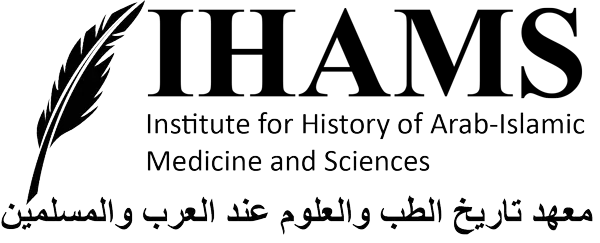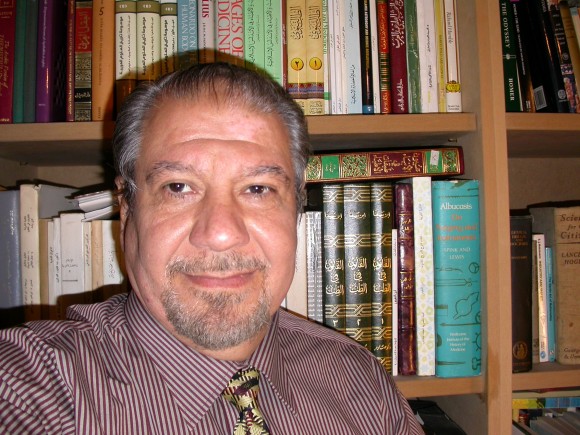Arab’s original scientific contributions reached a zenith in the Abbasid golden era (AD 754-1258) they dominated Europe, which at that time was sunk in its dark medieval age. Most of the Arabic texts in medicine and surgery were then translated into Latin by translators such as Constantinus Africanus (1020-87), a Benedictine monk at Monte Casino, Italy; Gerard of Cremona (1114-87) at Toledo, Spain; and Farai Ibn Salim (Moses Farachi). The latter was a Sicilian Jew who, at the order of the King Charles of Anjou in 1279, under took the ardous assignment of translating Rhazes ‘ Liber Continens (23 volumes).
From the end of the 13th century onwards further translation was delayed for many reasons. The peace of northern Europe was dislocated by the 100 Years War, which lasted from 1337 to 1453, while the population was ravaged by the Black Death (1345-7) and other epidemics. In the East, the Mongols’ savage invasion of Baghdad in 1258 A.D. caused a major scientific setback; Baghdad, the glittering centre of civilization of the East, had endured the first great catastrophe in the history of science.
The Mongol invasion invasion under Hulagu resulted in total destruction of the scientific infra-structure of Baghdad. The Tigris river was said to have run black for several days from the ink of priceless manuscripts from Baghdad’s libraries, used as dumps to act as crossing bridges for those savages.
The so-called Spanish Reconquest in 1492 A.D. (after eight centuries of Islamic civilization in Andalusia) resulted in the second great catastrophe. The Inquisition Tribunals, set up initially under Ferdinando and executed over the next century up to the time of Philip II (1492-1610), led to the expulsion of 2 million Jews and Christened Jews (La Marranos), 3 million Arab Muslims and Christened Muslims (La Moriscos) and the killing of 100 000 Christened people.
Furthermore, in 1610, Philip II ordered a massacre en route of 100 000 Muslims out of 140 000 Arabs leaving Spain on the final exodus. The majority of those Arabs were scientists and professionals. In 1511, and during the Spanish Inquisition Tribunals under the spiritual leadership of Cardinal Xemens, all Arabic manuscripts were burned in the public places of Granada, amounting to more than 80 000 volumes. In 1566, the Arabic language was banned officially, and it became Spaniards banal habit to kindle their everyday fire with Arabic books.
But by this time the influence of the Arabic texts was already widespread in Europe. When the Renaissance period began to renew an interest in science, most medical knowledge was available only in Arabic texts. A group known as the Humanists (so-named from a term coined by one of them, the poet Ariosto ‘umanisto). developed a decided enmity against another group known as the Scholastics and against the Arabic texts which were being used by the Scholastics. In their zeal, the Humanists endeavoured to purify the language of science by casting out all Arabic terms and substituting Greek and Latin terms. Many Arabic terms survived however, some of them probably mistaken for Greek words.
Circa 1400 AD, an Italian professor, Mondino of Bologna, influenced by Arab doctors, risked excommunication by the Church for suggesting that a better knowledge could be obtained from dissecting a human corpse than regarding the writings of Galen. It was he who popularized many of the surviving Arabic terms.
Leonardo da Vinci (1452-1516) was fluent in Arabic, and a great artist and scientist of the Renaissance period; he was fascinated by Arabic medical books and had instigated some personal observation and possibly actual dissection of a human cadaver. He blew air into the lungs of a corpse and showed beyond doubt that none of the air reached the heart. He also established the fact that heart valves allowed a unidirectional flow. Da Vinci illustrated the human anatomy beautifully; his illustrations and comments blended to achieve an unsurpassed work of creative art and the embodiment of the spirit of the Renaissance.
Andreas Vesalius (1514-1564) of Brussels, the so-called father of modern human anatomy, refused to accept slavishly the anatomical teachings of the Graeco-Roman physicians and authorities but rather to seek corroboration and to note discrepancies by the observational method of dissecting human cadavers. He was known by his enemies as the body snatcher! The Felmish Vesalius began to learn Arabic, Greek and Latin languages through able Spanish Jewish doctors. He was influenced by Avicenna and Rhazes; indeed, he initially wrote A Commentary on the Fourth Fen of Avicenna” and latterly, in 1537, he published his baccalaureate thesis, “Paraphrase on the Ninth Book of Rhazes’ at Louvain. His masterpiece, ‘ De Humani Corporis Fabrica Libri Septem (Seven Books on the Structure of the Human Body) and its companion volume the ‘Epitome” issued at Basle in 1543 established a milestone in medical art. Vesalius illustrated the visceral vessels in eloquent drawings with great scientific precision.
Spaniard Michael Servetus, a classmate of Vesalius, attacked Galen and wittingly or unwittingly confirmed Ibn Al-Naif’s concept of pulmonary circulation three centuries previously. He stated that the vital spirit was generated by the mixture in the lungs, of the air breathed in and blood which the right ventricle of the heart delivered to the left. He was executed by the Church in 1553.
William Harvey (1578-1657) of Kent (Britain), the famous and the most influential physician of St. Bartholomew’s Hospital (London), had read the Latinised version of the Arabic textbooks and was able to described and popularize the concept of systemic blood circulation in its comprehensive outline. Harvey dissected various animals and, in 1616, he gave a series of lectures at the Royal College of Physicians, essentially on anatomy. He then adumbrated the idea of blood circulation and his work was finally published in his book “De Motu Cordis et Sanguinis in Animalibus” (On the Motion of the Heart and the Blood in Animals) and De Circulatione Sanguinis” (On the Circulation of the Blood) in 1628.
Marcello Malpighi (1628-94) of Italy confirmed Harvey’s theory of blood circulation and elaborated on the concept of capillary circulation, as he described in his book “De Pulmonibus” (On the Lungs) published in 1661 in Bologna and based on his personal observation of the blood flew through magnified fine vascular networks in frogs. Professor Malpighi, therefore, provided the last missing link in the blood circulation.
In spite of the efforts of the Humanists, the translated versions of Haly Abbas’s “Liber Regius”, Albucassis “Al-Tasrif, Avicenan’s “Al-Canon and Rhazes’s “Liber Continens were used as the only standard textbooks in the medical schools of Western Europe from the early eleventh century to the early eighteenth century and were considered by many the main source for the European Renaissance in medicine and surgery.








